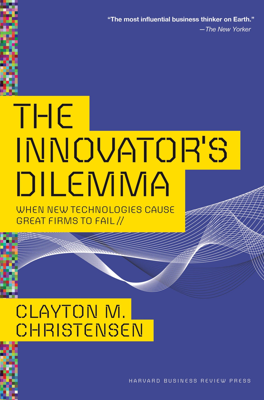What Goes Up, Can’t Go Down
The Northeastern Pull and Upmarket Migration
- Established firms tend to move upmarket into higher-performance, higher-margin products.
- This upward mobility is driven by rational resource allocation processes focused on improving financial performance.
- The chapter explores the history of Seagate Technology and the battle between minimill and integrated steelmakers to illustrate this phenomenon.
Upmarket Migration of Seagate Technology
- Seagate’s strategy represents a typical pattern for disk drive manufacturers.
- Initially dominated the desktop computing value network with 5.25-inch drives.
- When 3.5-inch drives disrupted the market, Seagate shifted its focus to mid-range computers such as file servers and engineering workstations.
- Upmarket migration made disruptive technologies dangerous to established firms and attractive to entrants.
Value Networks and Cost Structures
- Each value network has distinct cost structures which shape corporate behavior and profitability strategies.
- Disk drive manufacturers developed specific economic characteristics tuned to their value network.
- Moving upmarket offered higher margins and was seen as a straightforward path to improved profitability.
- Moving downmarket was less attractive due to the lower margins and cost structures of established competitors.
Resource Allocation and Upward Migration
- Bower’s model of resource allocation characterizes it as a bottom-up process with middle managers playing a critical role.
- Rational decision-making leads to supporting projects with assured market demand.
- Proposals for developing higher-performance products targeting higher-margin markets typically get funded over proposals for lower-margin, less-defined markets.
Case of the 1.8-inch Disk Drive
- Despite repeated developments of 1.8-inch drives, large companies found no viable market due to their focus on higher-margin products.
- This disruptive technology was recognized but not integrated effectively due to the conflicting priorities of employees and company profit goals.
- Even attempts to catch disruptive waves early were often stifled by the organizational culture and structure of established firms.
Value Networks and Market Visibility
- The simultaneous upmarket movement of customers and suppliers can obscure the downmarket threat.
- Disk drive manufacturers missed emerging disruptive technologies as their primary customers were also moving upmarket.
- Upmarket movement creates a vacuum in lower-end markets, allowing new entrants to establish themselves.
Minimill vs. Integrated Steelmakers
- Minimill technology, where steel is made from scrap using electric arc furnaces, emerged in the mid-1960s.
- Minimills operated at a fraction of the cost of integrated mills and focused on low-margin markets like rebars.
- Over time, minimills moved upmarket by improving the quality and expanding product offerings.
- Integrated steelmakers focused on profitable high-end markets, ceding lower-margin product lines to minimills.
- Managers at integrated mills made rational decisions to avoid low-margin markets but ultimately faced disruptive challenges from minimills.
Minimill Thin-Slab Casting and Market Impact
- Thin-slab casting technology, disruptive by nature, allowed Nucor Steel to enter the sheet steel market at a lower cost.
- Despite being evaluated by integrated mills, it was not adopted due to its initial position in low-margin segments.
- Nucor’s investment in thin-slab casting enabled it to capture market share in less-profitable but growing segments.
- Integrated mills’ focus on high-end markets prevented them from addressing disruptive threats effectively.
These points outline the challenges and strategic decisions that lead established firms to prioritize sustaining innovations in high-margin markets over disruptive technologies in emerging markets, ultimately leading to their potential decline.
